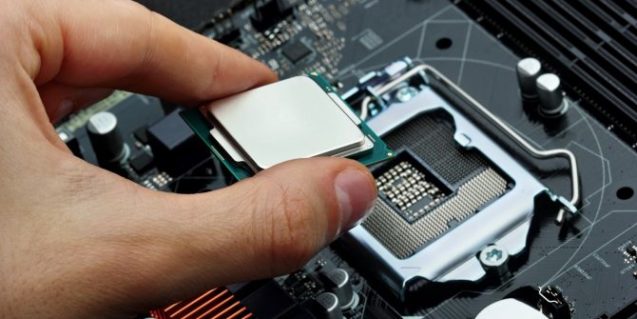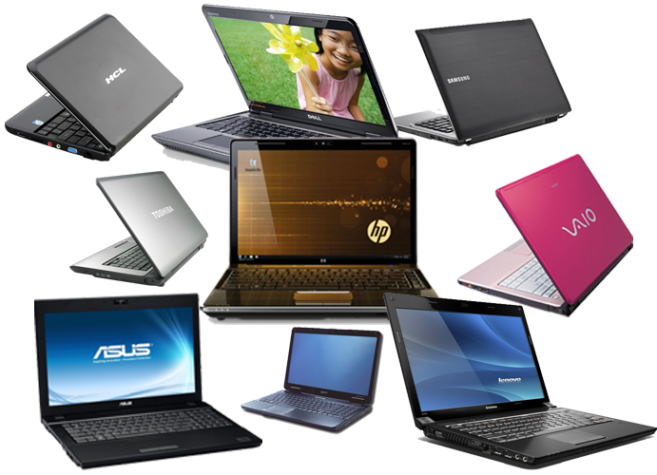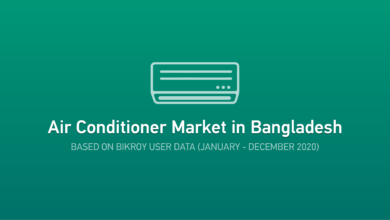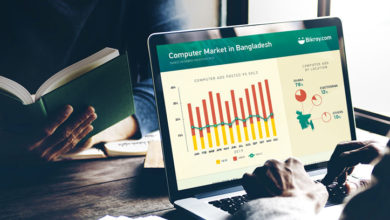How to Buy The Best Laptop Within Your Budget in Bangladesh?

Compact enough to carry around, yet versatile enough to run important applications, a laptop is the best gadget for doing serious work or play at almost any place you can possibly go to. While standalone smartphones and tablets are always popular, most people believe that anything from typing a research paper to crunching videos or even gaming works better on a laptop.
Now, the process of buying a new laptop should take some time. You have to make sure that it’s perfect for your needs, and also that you aren’t paying too much for it. You will also want something worth your money that will last for at least some years. There’s a wide variety of laptops according to size, features and price, which makes choosing the right one for you a challenge. That’s why you need to figure out first what your needs are. Today we are here to help you find the best possible laptop for your needs, no matter what your budget is.
Quick Tips
If you want a quick read and learn the basics in a fling, the following are the most important things to keep in mind when choosing a new laptop. For more detail, check out the sections later this point. Check out more The Ten Best Laptop Computers on the Market.
- 12.5 to 14-inch screens offer the best balance between portability and user comfort. Larger screens are okay if you don’t travel much, where smaller models are great for Kids.
- If you’re planning to spend over 50k BDT, look out for these minimum configuration specs:
- Core i5 CPU
- 1920 x 1080 screen
- 8GB of RAM
- SSD Storage instead of a hard drive.
- 8+ hours of battery life is enough if you plan to take your laptop anywhere at all.
- Consider buying a 2-in-1 if you want to use the laptop as a tablet as well. If not, a standard clamshell notebook may be the best choice.
- Chromebooks are good for kids and students. Windows laptops and MacBooks both offer a lot of functionality; the platform which you prefer is a matter of personal taste.
1. Pick your Platform: Windows, Mac or the Chrome OS?

This is not an easy question to answer, especially if you’re not familiar with both Macs and PCs. But this quick overview of each platform’s strengths and weaknesses should help.
Most laptops come with one of the three most popular operating systems: Windows, Chrome OS or Mac OS (for MacBooks only). Choosing one for yourself is a matter of personal preference, but here’s a quick summary of what each of these offers.
Windows 10
The most flexible operating system amongst the top three, Windows appears on many more brands and models than the Chrome OS or the Mac OS X. Windows notebooks price ranges from under 12k BDT to more than one lakh BDT and offer a wide array of features from touch screens to fingerprint readers and even to dual graphics chips. Windows 10, the latest version of Microsoft’s flagship OS, provides a number of improvements over Windows 7 and 8, including the ability to switch between tablet and desktop modes. Also there is a revamped Start menu with live tiles and the powerful digital assistant, Cortana. Since its launch in 2015, Windows 10 has also added some much-needed improvements, including the ability to use follow-up questions with Cortana, to search your email using natural language and use your stylus to scribble almost anywhere.
Apple MacOS High Sierra
All MacBooks come with Apple’s latest desktop operating system, the macOS High Sierra. Overall, this operating system offers functionality similar to Windows 10, but with a different move on the interface that substitutes an apps dock at the bottom of the screen for Microsoft’s Start menu and taskbar. Instead of the Cortana digital assistant, MacOS has Siri. They can also make transactions with Apple Pay, take calls or texts from their phones and unlock their laptops with a smart Apple Watch. However, with a macOS you don’t get the touch, because no MacBook comes with a touchscreen.
Chrome OS
Found in inexpensive Chromebooks such as the Samsung Chromebook 3. Google’s OS is simple and secure, but more limited than Windows or macOS. The user interface looks a lot like Windows with an application menu, a desktop and the ability to drag your windows around, but the main app you use is the Chrome browser. The downside is that many of the “web apps” you may use don’t work particularly well on Chromebooks offline. However, that’s changing as several Chromebooks, including the high-end Google PixelBook, can now run Android apps.
If you need a device to browse the Web and check emails, navigate social networks and chat online, Chromebooks are highly portable and tend to offer good battery life at low prices. They are also extremely popular among schools and parents, because they are hard for kids to infect with malware and more functional than most tablet PCs. If you need a Chromebook, opt for one with at least 4GB of RAM and 16GB of storage. A 1920 x 1080 resolution in the display is preferable but uncommon to find. Pay extra to get a 2-in-1 if you plan to use Android apps.
2. Decide If You Want a 2-in-1

There are several laptops today that fall into the category of 2-in-1s, hybrid devices that can switch between traditional clamshell mode, tablet mode and many other positions in between such as the tent or stand modes. 2-in-1s generally come in two different styles: detachables with screens that come off the keyboard completely and flexible laptops with hinges that bend back 360 degrees to change modes. Most of these systems are much better at serving one purpose than the other, with bend-backs being laptops first and detachables offering a superior tablet experience. However, if you don’t see the need to use your notebook as a slate, you’ll usually get more performance for your money with a traditional clamshell laptop.
If you decide that you want a 2-in-1, note that the bendable usually have far better battery life than their detachable cousins.
3. Choose the Right Size

Before you look at specs or pricing, you need to figure out just how portable you need your laptop to be. Laptops are usually categorized by their display sizes:
- 11 to 12 inches: The thinnest and lightest systems around have 11- to 12-inch screens and typically weigh 2.5 to 3.5 pounds,
- 13 to 14 inches: Provides the best balance of portability and usability, particularly if you get a laptop that weighs under 4 pounds.
- 15 inches: The most popular size, 15-inch laptops usually weigh 4.5 to 6.5 pounds. Consider this size if you want a larger screen and you’re not planning to carry your notebook around often.
- 17 to 18 inches: If your laptop stays on your desk all day every day, a 17- or 18-inch system could provide you with the kind of processing power you need to play high-end games or do workstation-level productivity.
4. Check the Keyboard and Touchpad
The most impressive specs in the world don’t mean diddly if the laptop you’re shopping for doesn’t have good ergonomics. If you plan to do a lot of work on your computer, make sure the keyboard offers solid tactile feedback, plenty of vertical travel (distance the key goes down when pressed, usually 1 to 2mm) and enough space between the keys.
Look for an accurate touchpad that doesn’t give you a jumpy cursor and responds consistently to multitouch gestures such as pinch-to-zoom. If you’re buying a business laptop, consider getting one with a pointing stick (aka nub) between the G and H keys so you can navigate around the desktop without lifting your fingers off the keyboard’s home row.
5. Pick Your Specs Wisely

Notebook components such as processor, hard drive, RAM and graphics chip can confuse even notebook freaks, so don’t feel bad if spec sheets look like some alphabet soup to you. Here are the main components to keep an eye on.
- CPU: The “brains” of your computer, the processor has a huge influence on performance. But depending on what you want to do, even the least-expensive model may be good enough. Here’s a rundown.
- Intel Core i5: If you’re looking for a mainstream laptop with the best combination of price and performance, get one with an Intel Core i5 CPU. Models that end in U (ex: Core i5-7200U) are the most common. Those with the Y in the name are low power and have worse performance while models with an HQ use more watt power and are used in thicker gaming and workstation systems. Intel’s new 8th Generation CPUs have model numbers that begin with 8 (ex: Core i5-8250U) and double the number of cores from two to four, which dramatically improves performance.
- Intel Core i7: A step up from Core i5, which Models with numbers that end in HQ or K and use higher watt power and have four cores, allowing even faster gaming and productivity. There are also Core i7 Y series chips that have lower power and performance. Keep an eye out for CPUs that have an 8 in the model number (ex: Core i7-8250U) because they are part of Intel’s latest, 8th Generation Core Series, and offer better performance. However, 8th Gen processors are only available in the U series right now.
- Intel Core i3: Performance is just a step below Core i5 and so is the price. If you can possibly step up to a Core i5, we recommend it.
- AMD Ryzen Mobile: A new set of chips that are designed to compete with Intel Core i5 and Core i7.
- AMD A, FX or E Series: Found on low-cost laptops. AMD’s processors, the company calls them APUs rather than CPUs, provide decent performance for the money that’s good enough for web surfing, media viewing and productivity.
- Intel Pentium / Celeron: Common in under 33k BDT laptops, these chips offer the slowest performance, but can do if your main tasks are web surfing and light document editing. If you can pay more to get a Core i3 or i5, you’d be better off.
- Intel Core m / Core i5 / i7 “Y Series”: Low-power and low heat allow systems with these processors to go fanless. Performance is better than Celeron, but a notch below regular Core i5 U series.
- Intel Xeon: Extremely powerful and expensive processors used for large mobile workstations. If you do professional-grade engineering, 3D modeling or video editing, you might want to buy a Xeon, but you neither get good battery life nor a lighter weight laptop.
- RAM: Some under 20k BDT laptops come with only 2GB of RAM, but ideally you will need at least 4GB on even a budget laptop and 8GB if you can spend just a little more. For most users, 16GB or more is just too much.
- Storage/ Hard Drive: Even more important than the speed of your CPU is the performance of your hard drive. If you have a good budget and don’t need a ton of internal storage, get a laptop with a Solid State Drive (SSD) rather than a hard drive, because you’ll see at least three times the speed and a much faster laptop overall.
- Display: The more pixels you have, the more content or information you can fit on-screen, and the sharper it will look. Sadly, most budget and mainstream laptops have 1366 x 768 displays and so do more than half of the business laptops. But if you can afford some more, we recommend paying extra for a panel that runs at 1920 x 1080, also known as full HD or 1080p. Some higher-end laptops have screens that are 2560 x 1600, 3200 x 1800 or even 3840 x 2160, which all look sharp but consume more power, lowering your battery life.
- Touch Screen: If you’re buying a regular clamshell laptop rather than a 2-in-1, you won’t get much benefit from a touch screen and it will cost you 1 to 3 hours less battery life. On 2-in-1s, touch screens are standard.
- Graphics Chip: If you’re not playing PC games, creating 3D objects or doing high-res video editing, an integrated graphics chip that shares system memory, will be fine. If you have any of the above needs, a discrete graphics processor from AMD or Nvidia is essential. As with CPUs, there are both high and low-end graphics chips. Low-end gaming or workstation systems today usually have Nvidia GTX 1050 while mid-range models have GTX 1050 Ti or GTX 1060 and high-end models have GTX 1070 or 1080. Nvidia maintains a list of its graphics chips from low to high end, as does AMD.
- Ports: While the absence of ports is usually not a deal-breaker when choosing a laptop, it’s helpful to get the connections you need right on the system, rather than having to carry a few extra adapters and all. Most mainstream laptops will have USB 3.0 ports and HDMI out for video. However, an increasing number of laptops use USB Type-C or Thunderbolt 3 ports that are USB Type-C compatible. Getting Type-C is a definite plus, because you can use it to connect to universal chargers and docks.
- DVD/Blu-ray Drives: Few laptops come with optical drives, because all software and movies are downloadable. However, if you really need to read/write discs and your laptop of choice doesn’t come with a built-in DVD drive, you can always buy an external one that connects via USB for under 1600 BDT.
- If you want to save money, you can skip certain unnecessary features such as an infrared camera or Windows 10 Pro OS.
6. Don’t Ignore the Battery Life
If you’re buying a large, bulky notebook that you’ll only use on a desk near a power outlet, you don’t have to worry about battery life. However, if you plan to use the laptop on your lap, even if it’s at home or work, you’ll need at least 5 hours of battery life, with 7 to 8+ hours being ideal. To determine a notebook’s expected battery life, don’t take the manufacturer’s word for it. Instead, check online reviews and sources like bikoy.com/laptops.
7. Plan Based on Your Budget

These days, you can buy a usable laptop for under 16k BDT, but if you have a bigger budget, you’ll get a system with better build quality, stronger performance and a better display. Here you can get the range of Laptop price in Bangladesh.
- 12k to 20k BDT: The least-expensive notebooks are either Chromebooks, which run Google’s browser-based OS, or low-end Windows systems with minimal storage and slower processors, such as the HP Stream 11 and the Dell Inspiron 11 3000. Use these as secondary computers only or give them to the kids.
- 29k to 50k BDT: For well under 50k BDT, you can get a notebook with an Intel Core i5 or AMD A8 CPU, 4 to 8GB of RAM, and a 500GB hard drive, all reasonable specifications. However, at this price, most notebooks don’t have an SSD, a full-HD display or long battery life. There are a few notable exceptions, such as the Acer Aspire E15 and Asus VivoBook E403NA. For this have a look on our another article “A Buyer’s Guide to Affordable Laptops“.
- 50k to 70k BDT: As you get above 50k BDT, you’ll start to see more premium designs, such as bodies with metal finish. Manufacturers also start to add other features as you go with higher prices, including higher-resolution displays and SSDs.
- Above 70k BDT: At this price range, expect notebooks that are more portable, more powerful or both. Expect higher-resolution screens, faster processors and possibly separate graphics. The lightest, longest lasting ultraportables, like the Apple MacBook and the Dell XPS 13, tend to cost more than 85k BDT (although you can get the Dell one for less if you don’t opt for a touchscreen). High-end gaming systems and mobile workstations usually cost upward of 1lakh 25k BDT or even as much as 2lakh or even 2lakh 50k BDT.
Conclusion
So whenever you think of buying a new Laptop PC for your home or workplace, do consider all these points thoroughly. Watch some online reviews and browse through online marketplaces to know or compare the Laptop price in Bangladesh and get everything at a reasonable price. Bikroy.com has all sorts of laptops and 2 in 1s available in the market for you to get your hands on. Visit today and welcome a brand new laptop or 2 in 1 in your home. Happy shopping!





